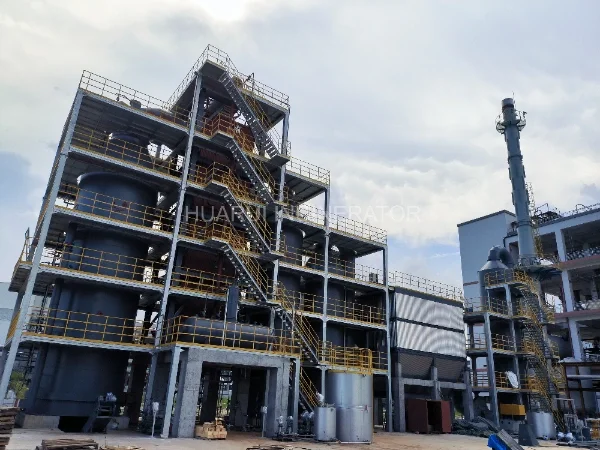
Clear records
history record
News
Optimizing Incinerator Hospital Waste Management for Modern Healthcare Facilities
The Rising Challenge of Hospital Waste Management
Modern healthcare facilities generate a vast amount of waste every day — from general waste and sharps to pathological and pharmaceutical residues. Effective incinerator hospital waste management has become one of the most pressing issues for hospital administrators, environmental agencies, and medical waste service providers alike. Improper disposal of infectious materials not only poses health risks to staff and communities but also results in serious environmental pollution.
The need for safe, efficient, and compliant waste disposal methods has never been greater. Among all the available options, hospital waste incinerators remain one of the most reliable technologies for the complete destruction of hazardous biomedical waste. By converting infectious and pathological materials into sterile ash and gas, these incinerators significantly reduce waste volume and eliminate harmful pathogens.
Understanding the Role of Incinerators in Hospital Waste Management
At the core of effective incinerator hospital waste management is thermal treatment — the controlled burning of waste at extremely high temperatures. Medical waste incinerators are designed to destroy all organic materials and reduce potential biohazards to ash, making the waste unrecognizable and non-infectious.
Hospitals, clinics, and laboratories rely on incineration systems to manage waste that cannot be safely recycled or treated by alternative technologies. Items such as contaminated dressings, expired pharmaceuticals, and surgical by-products often require high-temperature incineration to ensure complete sterilization and compliance with health regulations.
The efficiency of this process depends heavily on the incinerator’s design, combustion temperature, residence time, and emission control systems. Optimizing these elements ensures that the waste is fully destroyed while minimizing emissions and fuel consumption.
Key Components of an Efficient Hospital Incinerator
For an incinerator hospital waste management system to perform effectively, several critical components must work together seamlessly:
Primary Combustion Chamber: This is where waste is initially ignited and burned at temperatures typically between 800°C and 1000°C. Proper airflow and uniform heat distribution are vital for complete combustion.
Secondary Combustion Chamber: The secondary chamber ensures that any remaining gases or particulates are fully oxidized, preventing the release of harmful substances into the atmosphere.
Flue Gas Treatment System: Advanced filters and scrubbers capture particulate matter, neutralize acid gases, and ensure emissions remain within environmental standards.
Automatic Feeding and Ash Removal: Automation improves efficiency, safety, and cleanliness by minimizing manual contact with hazardous waste.
Monitoring and Control System: Modern incinerators include digital controls to track temperature, combustion efficiency, and emissions — critical factors in optimizing hospital waste management.
By integrating these technologies, a hospital can significantly reduce operational risks and environmental impacts while maintaining full regulatory compliance.
Environmental Compliance and Emission Standards
One of the most important aspects of incinerator hospital waste management is meeting stringent environmental standards. Many countries now require hospitals and waste treatment facilities to comply with international guidelines such as those from the World Health Organization (WHO) and local environmental agencies.
These regulations limit emissions of particulate matter, heavy metals, and toxic gases like dioxins and furans. To achieve compliance, hospitals must invest in incinerators equipped with advanced emission control technologies. Modern units utilize secondary combustion and gas cleaning systems to ensure the output is environmentally safe.
By optimizing combustion conditions and maintaining consistent temperatures, facilities can minimize harmful by-products and improve fuel efficiency — resulting in lower operational costs and a smaller carbon footprint.
Economic and Operational Benefits of Optimization
Beyond environmental protection, optimizing incinerator hospital waste management brings measurable financial and operational benefits. Efficient incineration systems reduce waste volume by up to 90%, cutting down on storage, transport, and landfill costs.
Automation and improved combustion efficiency reduce fuel consumption, while better system monitoring minimizes downtime and maintenance expenses. In large hospitals or centralized treatment centers, these savings quickly add up, offering a clear return on investment.
Moreover, an optimized incinerator system enhances the facility’s reputation for sustainability and regulatory compliance — an increasingly important factor for healthcare organizations seeking accreditation or government contracts.
Innovations in Modern Hospital Waste Incineration
The evolution of incinerator hospital waste management has led to several technological breakthroughs. Modern designs now incorporate energy recovery features, allowing heat from the combustion process to be used for hospital heating or hot water generation. This not only reduces waste but also contributes to energy efficiency and cost savings.
Some advanced systems integrate IoT (Internet of Things) technology to monitor emissions, fuel usage, and maintenance schedules remotely. Data-driven optimization ensures the incinerator operates at peak performance while maintaining strict environmental safety.
Manufacturers such as Huarui Incinerator have focused on developing robust, automated systems tailored to the specific needs of hospitals, clinics, and laboratories. Their equipment emphasizes reliability, energy efficiency, and compliance with international emission standards — making them a trusted partner in sustainable medical waste solutions.
Best Practices for Implementing Hospital Incinerator Systems
Successful incinerator hospital waste management requires more than just purchasing the right equipment. Hospitals must also establish proper operational protocols and staff training programs.
Some key best practices include:
Segregating waste at the source: Proper categorization of infectious, sharps, and pharmaceutical waste ensures only appropriate materials enter the incinerator.
Regular maintenance schedules: Routine inspection and servicing of burners, chambers, and emission systems ensure continuous efficiency and safety.
Data monitoring: Using smart controls to analyze combustion performance helps optimize temperature settings and minimize energy consumption.
Compliance documentation: Keeping accurate logs of waste volumes, incineration times, and emission reports supports regulatory audits and quality certifications.
By following these practices, healthcare facilities can achieve maximum performance and environmental responsibility from their incineration systems.
The Future of Hospital Waste Management
As global attention shifts toward sustainability, incinerator hospital waste management will continue to evolve. Hybrid systems combining incineration with waste-to-energy recovery, plasma gasification, or other advanced thermal treatments are gaining momentum. These technologies promise even higher efficiency and cleaner emissions, aligning with the healthcare sector’s goal of achieving zero-waste operations.
Additionally, continuous improvement in material science and automation will make hospital incinerators more durable, user-friendly, and cost-effective. The integration of AI-driven controls and predictive maintenance will redefine how hospitals manage their waste treatment infrastructure.
Huarui Incinerator, with its focus on research and innovation, continues to play an essential role in advancing these technologies, ensuring hospitals worldwide can meet future environmental and operational challenges with confidence.
Conclusion: A Smarter Path to Safe and Sustainable Waste Management
The importance of incinerator hospital waste management cannot be overstated. It remains a cornerstone of safe, compliant, and sustainable healthcare operations. Through modern technology, environmental responsibility, and strategic optimization, hospitals can protect both public health and the environment.
By adopting innovative incineration systems and adhering to global best practices, healthcare organizations can turn a complex waste challenge into a streamlined, eco-friendly process. Whether for small clinics or large medical centers, efficient incineration solutions like those developed by Huarui Incinerator represent the future of hospital waste management — clean, compliant, and sustainable.
Related news







